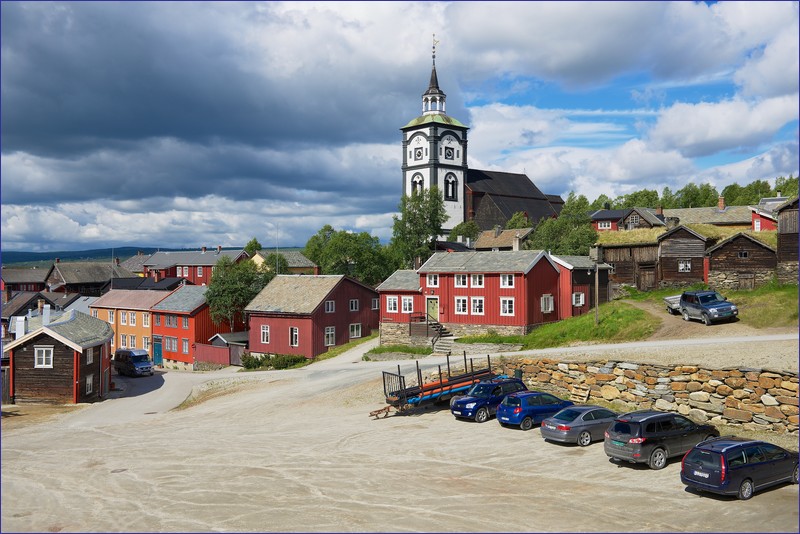Røros is a town of wooden buildings where you can travel back in time. The town was founded in 1614, when copper deposits were discovered in the area. According to legend, a local farmer went hunting, shot a reindeer, and as the animal fell, it uncovered a rock that glittered in the sunlight. Just two years later, the first mine was opened. The deposits began to run out in the second half of the 20th century, and mining operations finally ceased in 1977. Today, the town attracts tourists from all over the world eager to see its unique wooden architecture and sample local delicacies.
Main Sights and Attractions:
Røros Church (Norwegian: Røros Kirke) – The most famous landmark of the town. The church was built between 1780 and 1784 on the site of an old 17th-century church that had fallen into ruin. This majestic building was constructed during the golden era of the Røros Mining Company (Røros Kopperverk). It is one of the largest churches in Norway, with a capacity of 1,600 people. In 2010, the structure underwent a major renovation. Among the interior furnishings is an organ from 1742, the oldest functioning organ in the country. The church’s decorations are worth examining closely—one of them features Hans Olsen Aasen, who, according to legend, discovered the local copper deposits.
Røros Museum – Smelthytta (Norwegian: Rørosmuseet) – The museum is housed in buildings of the former copper smelting plant, which operated from 1646 to 1953. Visitors can learn about copper extraction and smelting technologies, and view mining equipment used from the 17th century up to the invention of electricity. The museum also provides a wealth of information about the history of Røros and its mines. It receives consistently positive reviews from visitors.
Printing Museum (Norwegian: Pressemuseet Fjeld-Ljom) – A museum located in a former printing house. Guided tours are available.
Olaf Mines (Norwegian: Olavsgruva) – Two mines open to visitors, located 13 km northeast of Røros. During the tour, visitors descend deep underground, where they can learn about historic copper mining techniques, the tools used by miners, the organization of work, and other fascinating aspects of old mining practices.
The residents of Røros still live and work in the characteristic wooden houses from the 17th and 18th centuries. Along the Hyttelva River, turf-roofed homes once used by miners and workers of Røros Kopperverk still stand. Many films have been shot in Røros.
Related articles:
Train travel in Norway – a comprehensive guide
